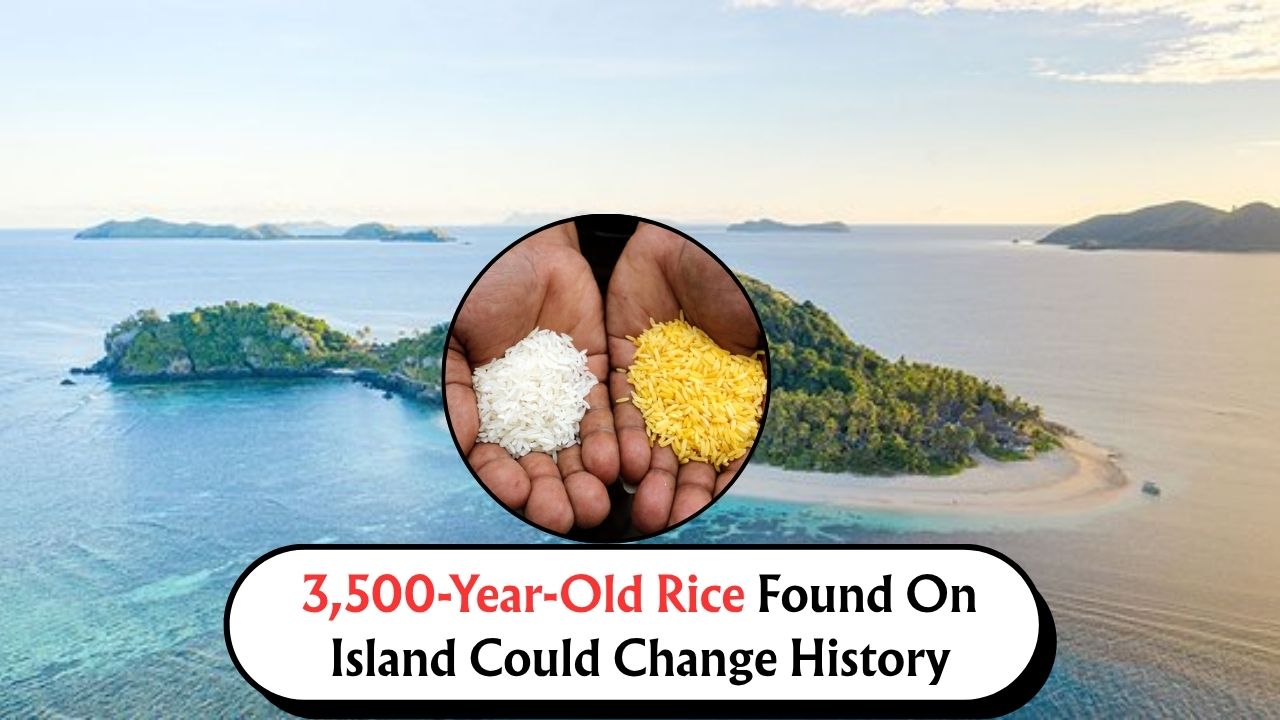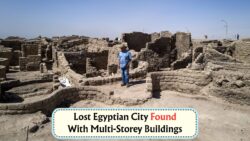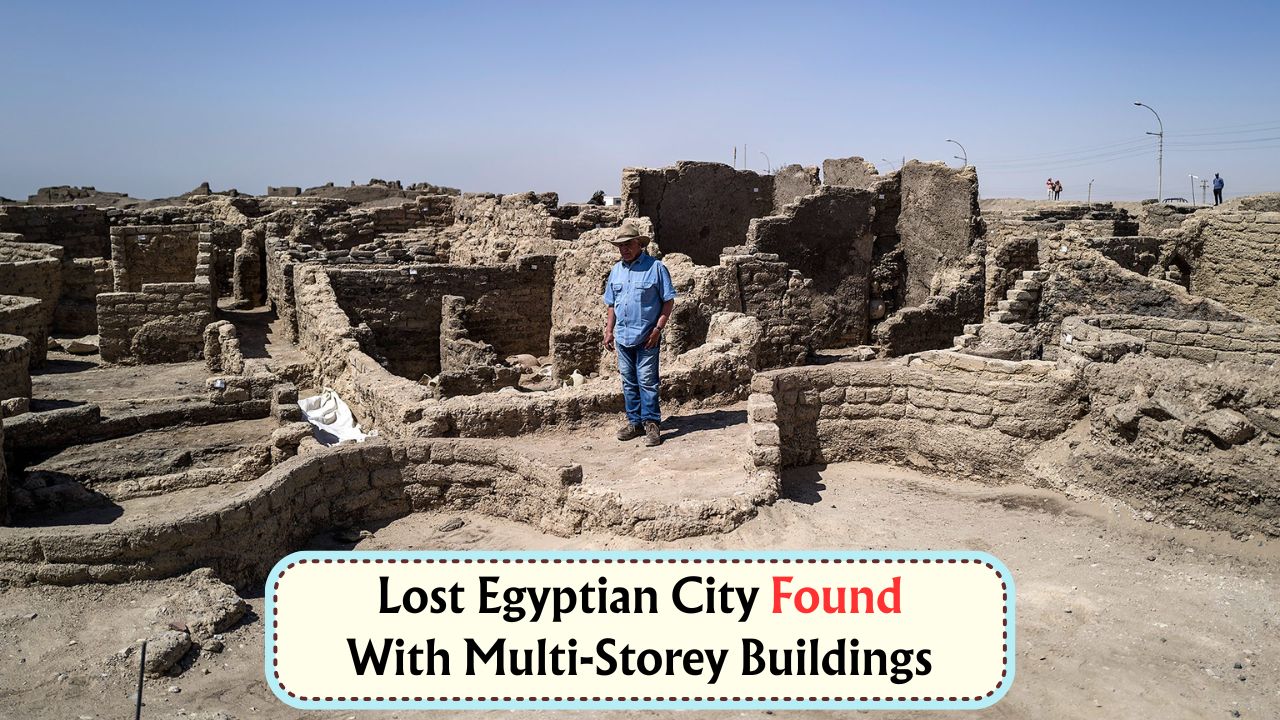3500-Year-Old Rice – In a groundbreaking archaeological discovery, scientists have unearthed 3,500-year-old rice grains on a remote Pacific island, potentially rewriting the timeline of human migration and agricultural development across Oceania. This astonishing find sheds light on the early spread of domesticated crops and raises profound questions about the ancient seafarers who once navigated vast ocean stretches. The discovery was made during a recent excavation on an uninhabited island in the Bismarck Archipelago, northeast of Papua New Guinea. Previously believed to be void of early agriculture, the island has now become a focal point of ancient human innovation, sea voyaging, and crop cultivation. Researchers believe this may be the earliest evidence of rice in the Pacific Islands.
The Location: A Remote Island with Hidden Secrets
The site of discovery is a forested and largely unexplored island that had been previously dismissed as archaeologically insignificant.
- Located in the Bismarck Archipelago
- About 1,000 km from mainland Papua New Guinea
- Sparse human presence over the last few centuries
- Deep, untouched soil layers preserved ancient remains
Why This Island Matters
The island’s isolation and lack of development preserved its archaeological layers perfectly. No prior rice discovery had been made this far east, making the find extremely valuable.
- Most ancient rice discoveries limited to mainland Asia
- The island’s sediments show no contamination from recent agriculture
- Charred rice grains were buried 2–3 meters below the surface
3500-Year-Old Rice: How Was It Dated and Identified?
Archaeologists used radiocarbon dating and microscopic analysis to identify and confirm the age of the rice grains.
- Radiocarbon dating confirmed age: approx. 1500 BCE
- Scanning Electron Microscopy revealed domesticated rice structure
- DNA analysis matches early rice strains from Taiwan and the Philippines
| Method Used | Result | Purpose |
|---|---|---|
| Radiocarbon Dating | ~3,500 years ago | Confirm historical timeline |
| SEM Imaging | Domesticated rice grains | Identify morphology |
| DNA Analysis | Matches Asian rice strains | Trace crop migration path |
| Soil Layer Stratigraphy | 3m deep preserved strata | Ensure no modern contamination |
Implications of the Grain Type
The rice matches Oryza sativa, specifically the japonica subspecies, which was cultivated in East Asia. This suggests long-distance human movement and intentional transport of crops.
- Indicates planned voyages carrying agricultural kits
- Contradicts earlier beliefs that only root crops spread in Oceania
- Supports Austronesian migration theory
Austronesian Seafarers and the Rice Connection
Historians and anthropologists have long debated how early Austronesian settlers spread across the Pacific. This rice discovery provides tangible evidence that agriculture, particularly rice, was part of their early toolset.
- Austronesians known for double-hulled canoes and navigation skills
- Early settlers likely carried rice seeds along with pigs, dogs, and chickens
- This find may push back Pacific settlement dates by several centuries
Cultural Footprint of Early Seafarers
The movement of rice may reflect not just survival, but cultural identity, ritual practices, or symbolic exchange.
- Some Pacific oral histories mention sacred grains or “foreign food”
- Rice could have been used in early rituals or trade
- Suggests higher cultural complexity than previously assumed
Could This Change Pacific History?
This one discovery could transform our understanding of Pacific prehistory in several ways:
- Early Agriculture
Rice joins taro and yam as ancient cultivated crops in Oceania. - Migration Timelines
Settlement of remote islands may have occurred much earlier than 1000 BCE. - Maritime Capabilities
Long-distance sea voyages with agricultural cargo were likely common. - Cultural Links
Stronger ties between Pacific Islands, Southeast Asia, and East Asia.
Possible Future Discoveries
Archaeologists are now planning further excavations on neighboring islands, which may uncover more grains or even ancient tools used in rice cultivation.
- Nearby islands show similar soil composition
- High-resolution satellite scans to identify new dig sites
- International collaboration expected to expand research
What Experts Are Saying
“This is a game-changer for Pacific archaeology. We’ve long suspected early agriculture here, but this provides hard proof,” says Dr. Malika Ponu, lead archaeologist on the project.
“We now have to rethink everything we knew about early Pacific settlers,” says Professor Alan Hughes, expert in Austronesian migration.
| Expert Name | Field | Quote Summary |
|---|---|---|
| Dr. Malika Ponu | Pacific Archaeology | Confirms agricultural presence |
| Prof. Alan Hughes | Austronesian Migration | Suggests earlier-than-thought settlement |
| Dr. Meiling Chen | Plant Genetics | Rice DNA links to Taiwanese ancestors |
| Dr. Jonah Taro | Oceanic Anthropology | Supports oral legends of ‘foreign food’ |
Global Impact and Future Research
The discovery has not only intrigued regional experts but is also drawing global attention from universities and institutions interested in early human expansion and plant domestication.
- UNESCO may soon list the site as a protected heritage location
- Global teams invited to contribute satellite, soil, and DNA analysis
- Plans underway for a documentary and museum exhibition
The Bigger Picture
This is more than a discovery about rice. It’s about resilience, exploration, and how humans transformed nature to thrive in new lands.
- The story of rice is the story of civilization
- Ancient Pacific cultures were more sophisticated than imagined
- History is still being written—grain by grain
The unearthing of 3,500-year-old rice grains on a remote island in the Pacific has opened a new chapter in our understanding of human history. It offers proof of early, complex societies who not only traveled vast oceans but brought with them the seeds of a new world—literally. As researchers dig deeper, the story of the Pacific may have to be rewritten from the roots up.







